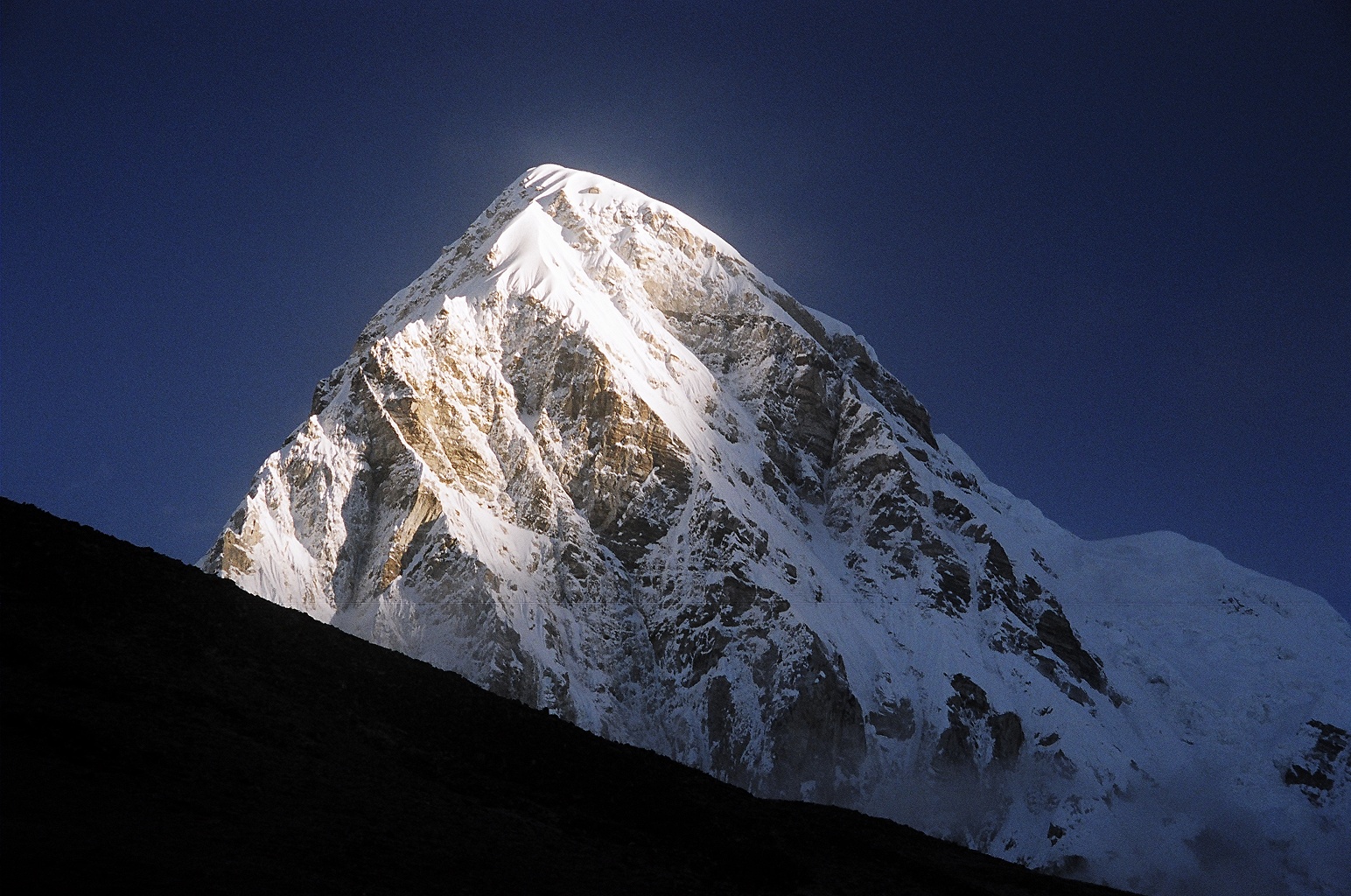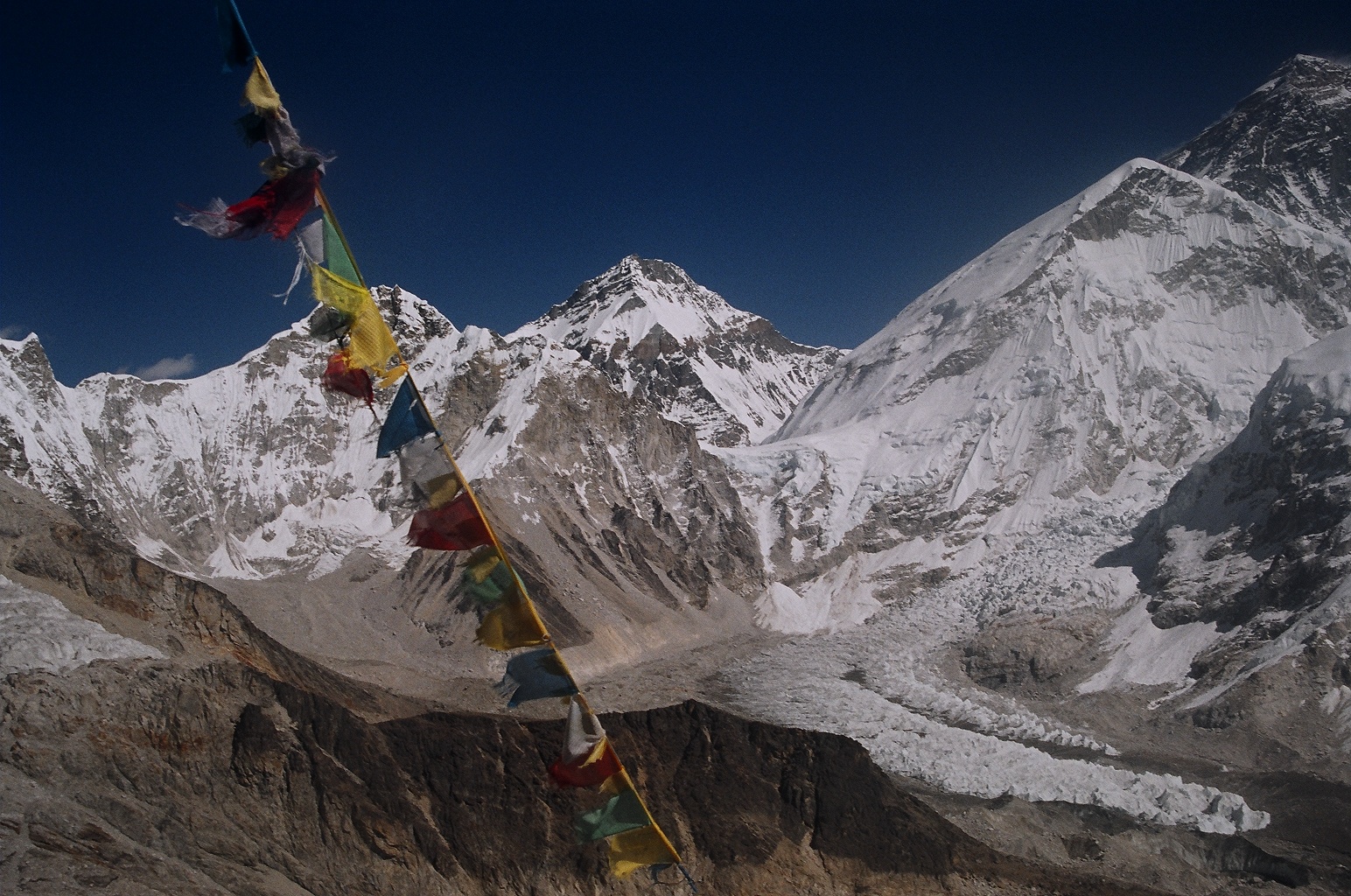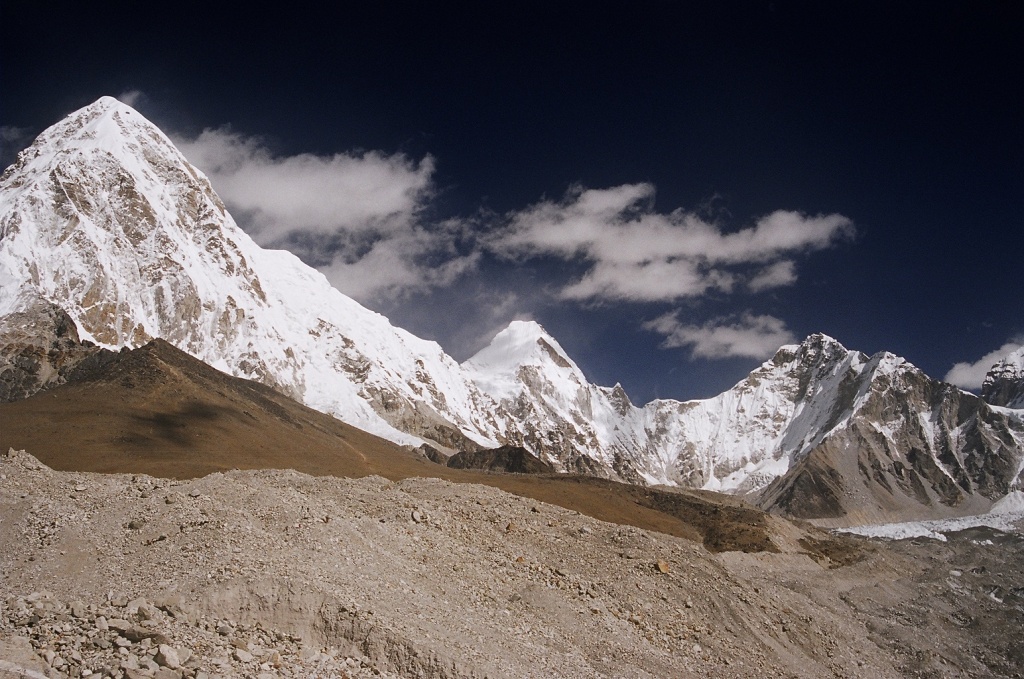By Ravi Shankar

The water was hot and the pressure optimum. For me the shower was a moment of pure bliss. I had heard poetic descriptions from fellow trekkers of the shower at the Eco Lodge. The hot water condensed in the cold air forming a welcome cocoon of warmth around me. Unfortunately, the shower duration was limited to five minutes. The water was heated using gas as was common throughout the Everest trekking region of Nepal. In the Annapurna region, north of the city of Pokhara, solar water heaters were common. Gas heaters always make me feel guilty about the environmental impact.
The water washed away the accumulated grime and sweat. The shower was expensive, and I was on a tight budget. My funds only permitted a shower once every ten to fourteen days. We were researchers involved in a clinical trial on high-altitude illness. The participants were enrolled at Pheriche more than 700 meters below and the study end point was at Lobuche (4900 m). Participants received two medical check-ups at high altitudes and two cups of tea/coffee for participating.
The Eco Lodge was an upmarket lodge in Lobuche in the year 2007 and we were staying there for over a month. Participants came to the lodge to complete the study and receive a second medical check-up. We listened to their chests, provided a physical examination, and measured their blood pressure and oxygen saturation. We had received a discount on the room rent but the food was expensive. Lobuche is situated at the foot of the Khumbu glacier. Everything had to be hauled from below.
For a long time, Lobuche had an unwelcome reputation due to the poor quality of the lodges. The restrooms were dirty, and the bedrooms flimsy. Maintaining hygiene in the cold dusty environment was a challenge. The Eco Lodge was the first upmarket lodge offering wood-panelled bedrooms with glass windows and clean toilets. The lodge had night toilets inside and day toilets outside. We were allotted an inside room in the main building. Dr Anup and I were the two doctors at Lobuche. The rooms were unheated and freezing though the main dining room had the ubiquitous cast iron heater burning yak dung. Yak dung is precious as fuel at these altitudes. It burns well with minimal smoke and residue and the flame is hot.
We were also the only doctors camped at Lobuche though some of the larger groups did have a doctor and the Sherpa guides were well-versed in altitude sickness. We did receive occasional calls for assistance. The Mountain Medicine Society of Nepal (MMSN) and the Himalayan Rescue Association (HRA) conduct clinical trials in the Everest and Manang regions of Nepal every fall. These provide medical students an opportunity to work with foreign experts and develop an interest in the subject. You receive transportation to the site, the services of a porter and a subsistence allowance.
Participants in the study had been instructed to check in with us after they had settled in Lobuche. In the evening we used to go around the other lodges looking for participating trekkers who had not yet met us. The evenings were chilly, and a freezing wind blew from the high Himalayas across the glacier. On climbing the moraines of the glacier there were spectacular views of the snow peaks. Sunset on Mt Lobuche and Mt Nuptse is not to be missed. The peaks turn golden yellow, then red, different shades of pink and finally the light is slowly extinguished.


The dining room at the Eco Lodge was smaller than the one at Nuru’s place in Pheriche and there was no green house. Dining rooms are the beating hearts of trekking lodges. At Lobuche the Sun was often covered in clouds and a cold wind blew off and on. The lodge did have glass tiles in the roof to capture the Sun. At night the dining room was cosy, and we met some interesting persons there during our stay. In those days there was no telephone service and no internet. A satellite phone was available in case of emergencies.
Nights in the room were freezing and I was reminded of Peter Matthiessen’s descriptions in the book The Snow Leopard of the long freezing nights in his tent at Shey Gompa in Dolpa. Our room was inside and out of the wind, and we also had a glass roof to catch the Sun. Anything kept outside in the room would be frozen solid by the morning. You had to keep stuff with you inside the quilt so that it could be gently warmed by your body heat. The long silent nights were conducive to meditating about life (and death).
From Lobuche it is a four-hour hike to the Everest Base camp at 5400 m. The hike is through the Khumbu Glacier and through stones and boulders. Some of the boulders were larger than a house. Global warming has resulted in significant shrinking and drying of the glaciers and the Khumbu and Ngozumpa glacier in the Everest region have both retreated significantly. The hike passes through the settlement of Gorak Shep and the weather can change dramatically in a few minutes. I had started my trek on a clear, sunny day but halfway through clouds gathered and the mountains were shrouded in white. Soon it started snowing heavily. The boulders became slick and slippery in the snow and walking became difficult.
During a previous visit I had visited ‘The Pyramid’, a scientific research station run by an international consortium in association with the Nepal Academy of Science and Technology (NAST). The research facilities were great, and the station is located at a 20 minutes’ walk from the trail. The station is entirely powered by solar energy. The location is spectacular, and the station is located far from the trials and tribulations of our imperfect world.
Staying in a trekking lodge for over a month is a different experience. Trekkers come and go but we continued to remain in the lodge. The cold was our constant enemy. The tips of your fingers became numb after a few minutes in the cold wind. The ultraviolet rays were strong at the high altitude, and I was soon tanned a dark shade of brown. Lobuche was the highest altitude at which I had stayed for nearly 40 days. All things considered I still preferred staying with Nuru at Pheriche where the climate is more hospitable, and life was gentler.
My friend Anup left at the end of the month. I had changed my place of work and still had some time before I joined a new medical school being set up in the Kathmandu valley and could stay longer till the next group of doctors could reach Lobuche and manage the study. The settlement of Lobuche was set up to meet the requirements of trekkers to the Everest Base Camp and to Kala Pathar (black rock), a famous Everest viewpoint. I was alone in my room, and it felt strange. The second team soon reached us, and I briefed them about what had been done and handed over the study material. Soon it was time to trek down to Pheriche, Pangboche, Tengboche, Namche Bazar (the Sherpa capital) and eventually fly out from the Tenzing-Hillary airport at Lukla to Kathmandu.


As mentioned, Lobuche for a long time had a terrible reputation. The quality of the lodges has steadily improved from bunk beds in dormitories to individual rooms. I was searching for lodges in Lobuche on the web recently. Many lodges now offer free wi-fi. The Pyramid also offers lodging at the 8000 Inn. With all these welcome developments, Lobuche can confidently and maybe, indignantly shrug off its reputation as the ‘arm pit’ of Nepal!

Dr. P Ravi Shankar is a faculty member at the IMU Centre for Education (ICE), International Medical University, Kuala Lumpur, Malaysia. He enjoys traveling and is a creative writer and photographer.
.
PLEASE NOTE: ARTICLES CAN ONLY BE REPRODUCED IN OTHER SITES WITH DUE ACKNOWLEDGEMENT TO BORDERLESS JOURNAL